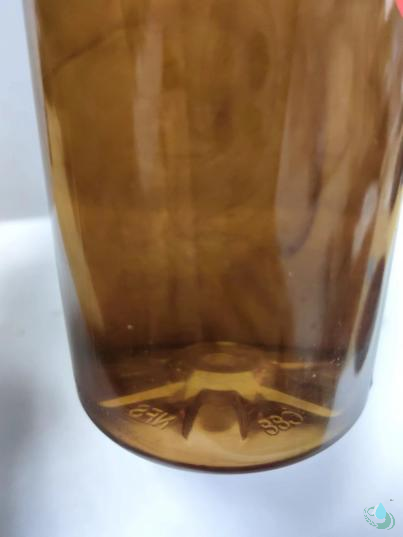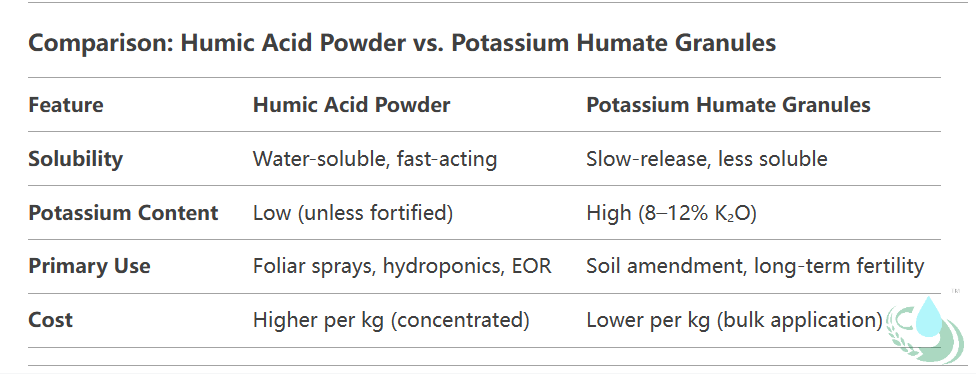We provide you with high-quality agricultural netting, commercial greenhouse materials, and other shading fabric in bulk. Just contact us to get the free sample, factory price, MOQ, and delivery time.
Humic Acid Powder: Applications in Agriculture and Petro Industry

Humic acid powder, derived from decomposed organic matter (e.g., leonardite, peat, or lignite), is a highly concentrated form of humic substances. It offers diverse benefits across agriculture and industrial sectors like petrochemicals. Below are its key uses, dosages, and advantages:
1. Agricultural Applications
Dosage & Methods
Humic acid powder is water-soluble and versatile. Dosage depends on soil quality, crop type, and application method:
• Soil Application (Broadcast/Mixing):
◦ General Use: 2–5 kg per hectare per season.
◦ Degraded Soils: Up to 10 kg/ha for soil remediation.
◦ Seedbeds/Compost: Mix 1–2 kg per ton of compost/soil.
• Foliar Spray:
◦ Dilute 0.1–0.5% (1–5 g per liter of water). Apply every 15–30 days during growth stages.
• Seed Treatment:
◦ Soak seeds in 0.01–0.05% solution (0.1–0.5 g per liter) for 6–12 hours.
• Hydroponics/Drip Irrigation:
◦ 0.5–2 kg per hectare dissolved in water, applied weekly.
Key Advantages in Agriculture
1. Soil Health:
◦ Improves soil structure, aeration, and water retention.
◦ Buffers pH and enhances cation exchange capacity (CEC).
2. Nutrient Availability:
◦ Chelates micronutrients (Fe, Zn, Mn) and reduces phosphate fixation.
◦ Boosts efficiency by up to 30%, reducing synthetic input needs.
3. Plant Growth:
◦ Stimulates root development and microbial activity.
◦ Enhances stress tolerance (drought, salinity, heavy metals).
4. Yield & Quality:
◦ Increases crop yield by 10–30% and improves fruit size/sweetness.
2. Petrochemical Industry Applications
Humic acid powder is used in oilfield operations and refining processes due to its surfactant, dispersant, and ion-exchange properties.
Key Uses & Dosage
1. Drilling Fluids:
◦ Function: Acts as a viscosity reducer and shale stabilizer.
◦ Dosage: 1–3% by weight of drilling mud.
2. Enhanced Oil Recovery (EOR):
◦ Function: Reduces oil viscosity and improves flow in reservoirs.
◦ Dosage: 0.1–0.5% injected into wells.
3. Wastewater Treatment:
◦ Function: Binds heavy metals and organic pollutants.
◦ Dosage: 0.5–2 kg per ton of wastewater.
4. Asphalt/Bitumen Stabilization:
◦ Function: Improves aging resistance and flexibility.
◦ Dosage: 0.5–1.5% by weight of asphalt mix.
Advantages in Petrochemicals
• Cost-Effective: Reduces reliance on synthetic chemicals in drilling and refining.
• Eco-Friendly: Biodegradable alternative to toxic additives.
• Performance: Enhances fluid stability and reduces equipment corrosion.

Key Considerations
• Purity: Agricultural-grade humic acid should have >70% humic substances; industrial grades vary by application.
• Compatibility:
◦ Avoid mixing with strong acids/alkalis unless formulated for stability.
◦ Test compatibility with fertilizers or drilling additives before bulk use.
• Storage: Keep in dry, cool conditions to prevent clumping or oxidation.

Conclusion
Humic acid powder is a multifunctional input for agriculture (improving soil and crop resilience) and the petrochemical industry (enhancing drilling efficiency and pollution control). Tailor dosage and application methods to specific needs, and prioritize high-quality, tested products for optimal results.
Humic Acid Powder: Applications in Agriculture and Petro Industry

Humic acid powder, derived from decomposed organic matter (e.g., leonardite, peat, or lignite), is a highly concentrated form of humic substances. It offers diverse benefits across agriculture and industrial sectors like petrochemicals. Below are its key uses, dosages, and advantages:
1. Agricultural Applications
Dosage & Methods
Humic acid powder is water-soluble and versatile. Dosage depends on soil quality, crop type, and application method:
• Soil Application (Broadcast/Mixing):
◦ General Use: 2–5 kg per hectare per season.
◦ Degraded Soils: Up to 10 kg/ha for soil remediation.
◦ Seedbeds/Compost: Mix 1–2 kg per ton of compost/soil.
• Foliar Spray:
◦ Dilute 0.1–0.5% (1–5 g per liter of water). Apply every 15–30 days during growth stages.
• Seed Treatment:
◦ Soak seeds in 0.01–0.05% solution (0.1–0.5 g per liter) for 6–12 hours.
• Hydroponics/Drip Irrigation:
◦ 0.5–2 kg per hectare dissolved in water, applied weekly.
Key Advantages in Agriculture
1. Soil Health:
◦ Improves soil structure, aeration, and water retention.
◦ Buffers pH and enhances cation exchange capacity (CEC).
2. Nutrient Availability:
◦ Chelates micronutrients (Fe, Zn, Mn) and reduces phosphate fixation.
◦ Boosts efficiency by up to 30%, reducing synthetic input needs.
3. Plant Growth:
◦ Stimulates root development and microbial activity.
◦ Enhances stress tolerance (drought, salinity, heavy metals).
4. Yield & Quality:
◦ Increases crop yield by 10–30% and improves fruit size/sweetness.
2. Petrochemical Industry Applications
Humic acid powder is used in oilfield operations and refining processes due to its surfactant, dispersant, and ion-exchange properties.
Key Uses & Dosage
1. Drilling Fluids:
◦ Function: Acts as a viscosity reducer and shale stabilizer.
◦ Dosage: 1–3% by weight of drilling mud.
2. Enhanced Oil Recovery (EOR):
◦ Function: Reduces oil viscosity and improves flow in reservoirs.
◦ Dosage: 0.1–0.5% injected into wells.
3. Wastewater Treatment:
◦ Function: Binds heavy metals and organic pollutants.
◦ Dosage: 0.5–2 kg per ton of wastewater.
4. Asphalt/Bitumen Stabilization:
◦ Function: Improves aging resistance and flexibility.
◦ Dosage: 0.5–1.5% by weight of asphalt mix.
Advantages in Petrochemicals
• Cost-Effective: Reduces reliance on synthetic chemicals in drilling and refining.
• Eco-Friendly: Biodegradable alternative to toxic additives.
• Performance: Enhances fluid stability and reduces equipment corrosion.

Key Considerations
• Purity: Agricultural-grade humic acid should have >70% humic substances; industrial grades vary by application.
• Compatibility:
◦ Avoid mixing with strong acids/alkalis unless formulated for stability.
◦ Test compatibility with fertilizers or drilling additives before bulk use.
• Storage: Keep in dry, cool conditions to prevent clumping or oxidation.

Conclusion
Humic acid powder is a multifunctional input for agriculture (improving soil and crop resilience) and the petrochemical industry (enhancing drilling efficiency and pollution control). Tailor dosage and application methods to specific needs, and prioritize high-quality, tested products for optimal results.